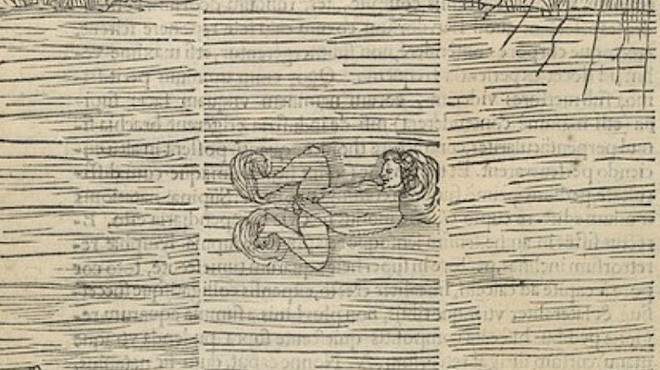The swimming book of the 16th century with many useful knowledge, helps to survive when entering the water
In 1587, in the Tudor period, the theologian Everard Digby of Cambridge published the book "De Art Natandi" (The Art of Swimming). This is a useful set of guidelines for those who want to learn how to swim.
This is the first to be written and printed in the UK, this is an important and extremely useful guide in everyday life. Even original book pages are wax-covered, most likely to keep the book from getting wet when the learner swims with it when practicing.

The book "De Art Natandi" (The Art of Swimming) by Everard Digby theologian.
The first half of the book covers the theory of swimming, the second half discussing techniques. Attached are 40 drawings to illustrate the postures made from wood-carved prints. The book not only offers tips to ensure life while underwater, the way the author separately describes the skills in a humorous way is also extremely interesting.
Here are some typical illustrations of Digby's work to life, in fact this book has taught people in the 16th century how to swim.
Redirecting when swimming in cockroach style (The Roach Turn)

This position helps you navigate while swimming back.
"There is a way to change direction while swimming in the belly position and face up to the sky: Sudden change of direction, remain in position but move the head and body to the other direction. This is the" Roach Turn "position: when wanted turning right, suddenly wiping the water with your left hand, pulling the water behind the body with your right hand, turning your head and body as you see in the illustration ".
Dog-like water or dog swimming (To Paddle Like a Dog)

Guide to swimming dog style.
Digby gave a very beautiful description for dog swimming: "This is the type of swimming that many people learn in the first time, but often the posture is not right. Most accurately, people should be on their feet, legs, hands. swing below the chest, hands can be closed or open, put your hands forward in parallel with the chest, then push the water backwards, when swimming right to splash the water ".
Find objects that fall under water

Instructions on how to find underwater objects.
This is the secret for 16th-century adults to help children pick up toys that fall into the water: "He must swim in the water, as close to the bottom as possible, he can touch his hand to the bottom but cannot make mud to muddy water, eyes wide open to see where the falling object is. For those who don't want to dive deep, don't swim farther than you see, because it's very deep, a beach or something very dangerous. "
Guide to swimming back

Before having swimwear, you will have to cover your sensitive area when you are under water.At least have to do that in my picture.
"With this posture, it must be on your own back, the body stretches and relaxes, raising the breast so that the body does not sink and can swing one leg at a time on the water, the body will be pulled back."
- Mexico discovered 16th-century Mayan tombs
- Books remove more than 99% of bacteria in dirty water
- Compare 16th century maps and satellite maps today
- History of book publishing industry development
- The aromatic oil of the aristocratic family of the 16th century French
- Discovered a book by animal skin that shook the Christian believers
- The skeleton of the 16th century was stuffed with vampire bricks?
- Reveal a part of the world's most mysterious book
- 7 super interesting scientific knowledge that we missed while at school
- The truth of the death of the 16th century astronomy
- The mystery inside the prayer book from the 13th century
- Sell one of the most mysterious books in the world
 'Fine laughs' - Scary and painful torture in ancient times
'Fine laughs' - Scary and painful torture in ancient times The sequence of numbers 142857 of the Egyptian pyramids is known as the strangest number in the world - Why?
The sequence of numbers 142857 of the Egyptian pyramids is known as the strangest number in the world - Why? History of the iron
History of the iron What is alum?
What is alum?